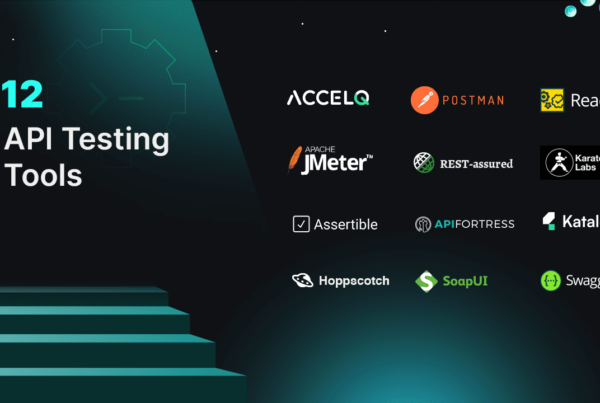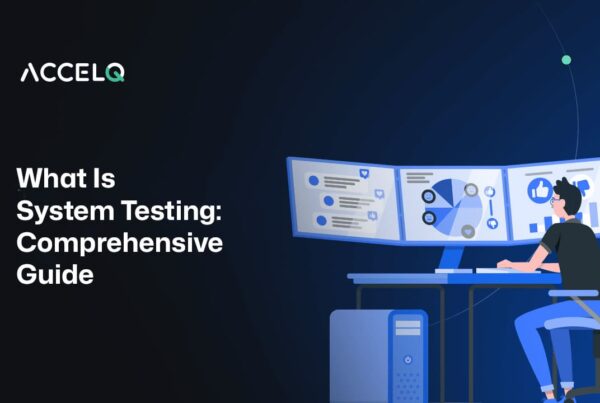Regression Testing: The Ultimate Guide with Examples

The word “regression” means to return, which is not necessarily desirable in many aspects of life. However, regression testing within the software testing system is vital to keeping the software stable even with constant modernization. With the fast-paced and digital world around us, users expect nothing but perfection from their experiences—60% of users will abandon an application after the very first performance issue, and as much as 80% will delete an application after the first time they use it.
Software updates and improvements are released regularly, and while these updates are intended to add new features to better the user experience, there are times when the new changes interfere with the current features already in place. An unvetted change may cause performance issues, security vulnerabilities, or workflow breaks. Thus, businesses need to embrace regression testing in their development cycle to mitigate risks, ensure reliability, and provide an uninterrupted user experience.
What is Regression Testing?
Regression testing is a software testing technique that determines whether recent code changes have affected existing functionalities. It means executing a subset of the test cases again to ensure that changes — like bug fixes, new functionality, or changes in existing functionality — do not create unintended side effects. It ensures that previous functions are still working to maintain the software’s quality and the system’s integrity.
Why is Regression Testing Important?
Incorporating it into the software development life cycle offers several benefits:
- Early Detection of Defects: Identifies issues introduced by recent changes before they reach production.
- Ensures Software Stability: Maintains the reliability of existing functionalities amidst ongoing development.
- Facilitates Continuous Delivery: Supports frequent releases by ensuring new changes do not disrupt existing features.
- Enhances User Satisfaction: Delivers a consistent user experience by preventing the recurrence of old bugs.
Regression Testing vs. Retesting
Although both regression testing and retesting require test execution, they focus on different objectives:
- Retesting: Aimed to ensure specific defects have been rectified. This means executing the tests that previously failed due to some bugs that were identified.
- Regression Testing: Verify that any new code additions have not negatively affected existing features. That includes a wider range of tests to ensure overall system stability.
Retesting confirms the resolution of known issues, while regression testing checks for unintended side effects in the unmodified parts of the software.
Types of Regression Testing
- Unit Regression Testing: It is used to test software units to ensure that internal code changes do not alter the functional behavior of the units.
- Partial Regression Testing: Checks if the recent changes are functioning as intended while also confirming this has not negatively affected the parts of the application that remained unchanged.
- Full Regression Testing: This tests all of the applications to ensure that new changes have not introduced bugs in any part of the application. This is usually done after several changes were made to the original code.
Regression Testing Techniques
To successfully accomplish this, the following techniques are applied:
- Retest All: In this approach, all existing test cases are executed to verify that the recent changes haven’t impacted any area of the software. Although comprehensive, this method can be particularly time- and resource-intensive.
- Regression Test Selection: It is about selecting a subset of test cases that are relevant to the recent changes. This approach is useful for minimizing test efforts by focusing on affected areas.
- Test Case Prioritization: It gives test case ratings considering different factors such as types of cases, criticality, selectivity, and usage frequency. Top priority tests run first to validate the highest priority functionalities.
- Hybrid Approach: This approach is used for regression test selection and test case prioritization to use the test selection and prioritization together for effectiveness between efficiency and with high coverage as needed
When to Perform Regression Testing
To maintain the quality of software, it should be performed in various scenarios:
- Post Bug Fixes: To ensure that the corrected issues are not repeated and new problems have not been introduced due to fixes.
- Post Feature Enhancements: To ensure that new functionalities do not break existing features and integrate well.
- During Integration: To ensure that integration of various modules or components does not cause unforeseen behaviors.
- Pre-release Releases: To make sure that software is stable and reliable before deploying it to production environments.
Challenges in Regression Testing
Regression testing, however, comes with its challenges despite its importance:
- Time and Resource Constraints: Regression testing can be time-consuming, and massive projects may require lots of resources.
- Maintenance of Test Cases: Updating test cases in line with changing software could be time-consuming.
- Change Impact Analysis: Understanding how recent changes affect existing functionality requires extensive analysis.
- Automation Complexity: Automation of regression tests can be complex, especially for applications with dynamic user interfaces.
Best Practices for Regression Testing
However, to combat these challenges and improve the quality of your regression tests, try these best practices:
- Implement Regression Testing: Designate core test cases and frequency against risk-based priority.
- Seamless prioritization of test cases: Since you are working with limited resources, it is ok to have high-impact areas and critical functionalities more concentrated.
- Automate Where You Can: Significant, time-consuming, repeatable test cases can be automated.
- Keep the Test Suite Updated: Continuously go through the existing test cases and update them as per the current software functionalities and delete the no longer relevant tests.
- Integrate with Continuous Integration/Continuous Deployment (CI/CD): Add regression tests to the CI/CD pipeline to catch issues early in the development lifecycle.
- Keep Track of Build and Test Results: Analyzing test results helps in finding trends, increasing test coverage, enhancing testing strategies, etc.
Conclusion
Regression testing is essential in the software development cycle, as it guarantees that no new code changes have interfered with existing functionalities. These practices will help organizations maintain the quality of the software, minimize the risk of defects, and confidently deliver products to users.
With regular software releases and agile development practices, it has become a critical need. AI-driven test automation platforms such as ACCELQ can provide significant gains in efficiency by facilitating continuous testing without human intervention.
With built-in codeless automation capabilities, ACCELQ enables testing without the hassle of coding and provides in-depth coverage across web, mobile, API, and enterprise applications, thereby driving regression testing alignment, reducing release cycles, and ensuring all-around test coverage. Intelligent automation enables organizations to deliver software faster, more reliably, and with a level of quality that meets the demands of the business.
Prashanth Punnam
Sr. Technical Content Writer
With over 8 years of experience transforming complex technical concepts into engaging and accessible content. Skilled in creating high-impact articles, user manuals, whitepapers, and case studies, he builds brand authority and captivates diverse audiences while ensuring technical accuracy and clarity.
You Might Also Like:
 12 Best API Testing Tools
12 Best API Testing Tools
12 Best API Testing Tools
 15 Types of Testing Every QA Must Know
15 Types of Testing Every QA Must Know
15 Types of Testing Every QA Must Know
 Comprehensive Guide to System Testing: Ensuring Software Excellence
Comprehensive Guide to System Testing: Ensuring Software Excellence



































